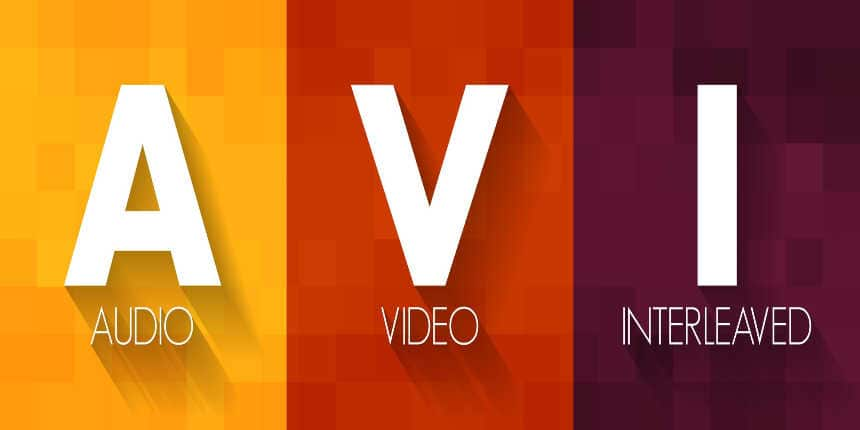AVI Full Form
What is the full form of AVI?
The full form of AVI is Audio Video Interleave. AVI is a multimedia container format that contains both video and audio information in a recording holder. The volume allows synchronous playback of audio and video, so AVI files support multiple streaming. AVI helps in sharing video recordings, and AVI recording is one of the most widely used among various video groups. Whether experts or beginners, everyone depends on AVI recording to create videos.
- History of AVI
- AVI Format
- Benefits of AVI
- Limitations of AVI

AVI files have become very popular on various platforms due to their compatibility and simplicity. They usually contain TV shows and movies in small sizes but of great quality.
AVI files end with “.avi” extension, e.g. “video.avi”, “movie.avi” etc.
History of AVI
Publishers faced the problem of distributing videos on CD-ROMs. In 1992, a 30-second video at 30 frames per second at super VGA resolution would take up about 680 megabytes of space, which was the storage capacity of most CD-ROMs. Lossy compression of videos would save a lot of space, but not without degrading the quality of the videos. In order to ensure the quality of the videos, publishers searched for an ideal compression algorithm that would compress the video files without compromising their quality.
Microsoft recognized the problem and tried to develop a standard that could compress the video files without loss. As a result, the company realized that low-end users would be unable to play the videos in uncompressed quality because the hardware requirements were so high at that time. They developed and released the Audio Video Interleave format on November 10, 1992, as part of their Video for Windows and supported codecs to satisfy these users.
AVI Format
Rephrase AVI is a subformat of Resource Interchange File Format (RIFF). These are blocks within files created so that data can be broken into smaller chunks. Each chunk is identified by a fourCC tag.
The AVI file is then divided into several chunks, or "chunks". The first chunk, identified by a tag called "hdrl", stores the information needed by the codec, extracted from the mainstream of the file. The second chunk, identified by a tag called "movi", contains the actual audio and image data that make up the AVI video.
When a file is created and uses the RIFF format, a codec can transform between raw data and the compressed data format that is used within the chunk. Generally speaking, there are many different compression schemes that could be used in a file because it may contain both audio and image data. In a protected version of Microsoft's proprietary format, an AVI file could contain uncompressed audio or image data or a means for the secondary party to encrypt the audio and image data and, if you will, authenticate the integrity of the audio and image content.
Some programs, such as VLC, consider it bad form if the use of the index subchunk "idx1" is not required, since it's necessary to ensure efficient timestamp shifting. This instance is met with the option to "Fix the file by temporarily or permanently".
Benefits of AVI
AVI videos are characterized by high audio compatibility.
There are several codes that help users achieve the desired ratio when compressing files online, such as DivX and XviD.
This type of file does not require any specific software or hardware. Therefore, the number of people who can open and run these files is very large.
Unlike other A/V formats, the DV-AVI standard can be compressed. This makes it compatible with DV standards.
The AV files can be used to create playable floppy disks and DVDs on which the first A/V video data is stored.
The quality of AVI files is excellent for master files. The compression capabilities of AVI files make it the most widely used format for commercials, promos, short videos, etc.
People are familiar with the AVI file format and therefore know how to use it without much difficulty.
Since Microsoft developed the AVI file format, it can be played on most Microsoft and non-Microsoft devices OS.
You can create playable DVDs using AVI as a starting point.
Limitations of AVI
Softsubs are not supported by this file format.
In comparison with other record designs, some AVI records can be quite large.
Files cannot be stored by a user in large amounts.
Other Related Full Forms
Frequently Asked Questions (FAQs)
AVI stands for Audio Video Interleave, a widely used video file format created by Microsoft in 1992. Native to all Microsoft Windows operating systems, this file format is compatible with synchronized playback of different types of video and audio streams.
While AVI appears to be the higher media container for quality, it makes use of very large file sizes; hence, can also require compression to smaller file formats. MP4, on the different hand, makes use of smaller file sizes and works with nearly all media players, however has an inferior video output high-quality in contrast to AVI.
AVIs are primarily used as storage containers for videos, movies, and other video files. It was developed by the Microsoft Corporation in November 1992 and is widely known for its use of the AVI-formatted audio and video files.
The quality of MPEG videos is higher than that of AVI videos. The compression algorithm of MPEG is superior to that of AVI. The measurement of an AVI file is larger than that of an MPEG file containing equal content. MPEG file structure is supported by means of greater browsers, players, and applications when in contrast to AVI.
If you want a better format compatibility and play your videos almost anywhere, AVI should be your first choice. If video quality is what you most care about, then you should pick out MKV for its capability of storing high quality HD movies.